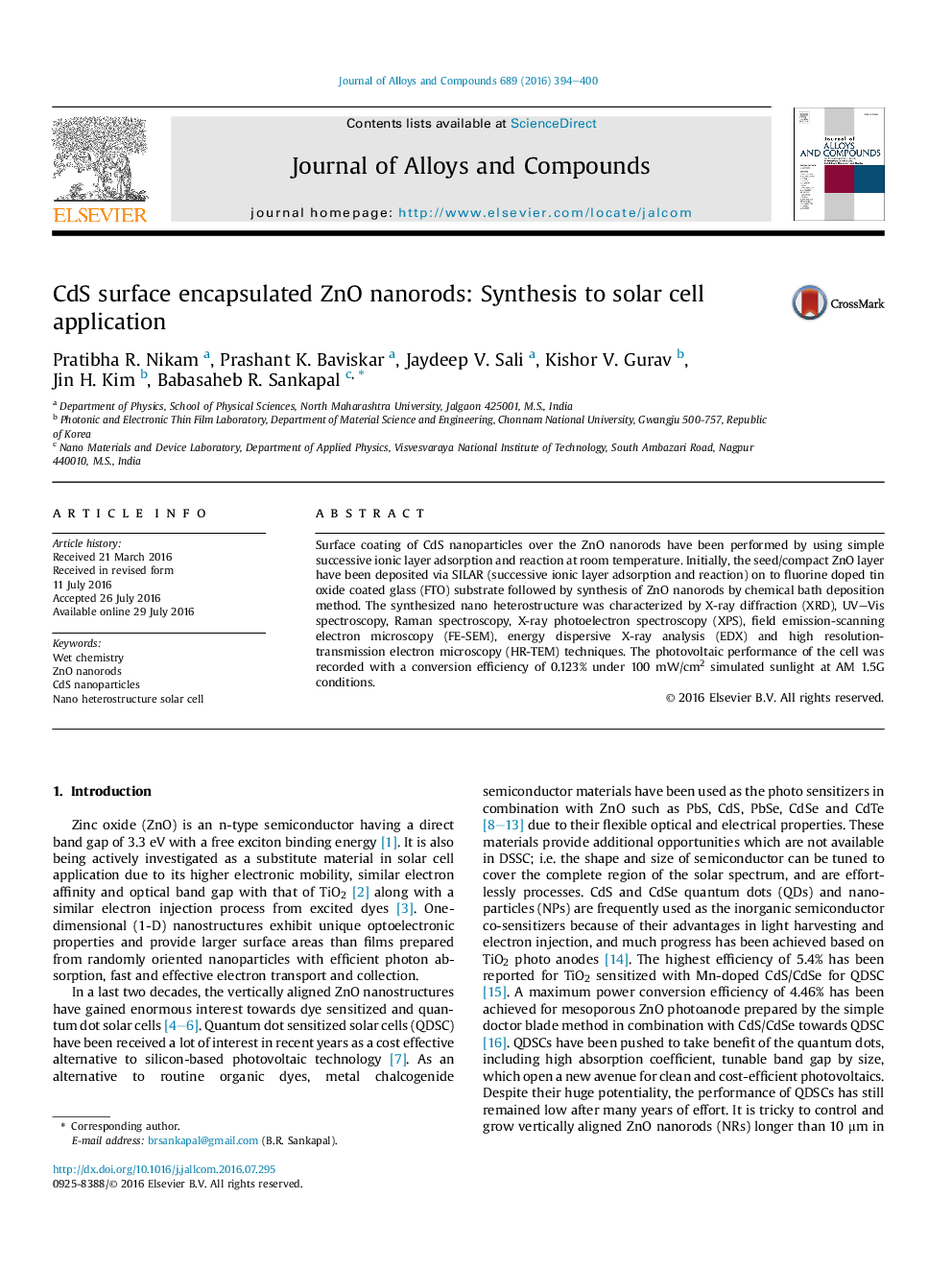| Article ID | Journal | Published Year | Pages | File Type |
|---|---|---|---|---|
| 1605151 | Journal of Alloys and Compounds | 2016 | 7 Pages |
•Synthesis of ZnO nanorods using simple solution chemistry.•Surface encapsulation of ZnO nanorods with CdS nanoparticles using SILAR method.•CdS sensitized ZnO nano heterojunction solar cell show 0.123% efficiency.
Surface coating of CdS nanoparticles over the ZnO nanorods have been performed by using simple successive ionic layer adsorption and reaction at room temperature. Initially, the seed/compact ZnO layer have been deposited via SILAR (successive ionic layer adsorption and reaction) on to fluorine doped tin oxide coated glass (FTO) substrate followed by synthesis of ZnO nanorods by chemical bath deposition method. The synthesized nano heterostructure was characterized by X-ray diffraction (XRD), UV–Vis spectroscopy, Raman spectroscopy, X-ray photoelectron spectroscopy (XPS), field emission-scanning electron microscopy (FE-SEM), energy dispersive X-ray analysis (EDX) and high resolution-transmission electron microscopy (HR-TEM) techniques. The photovoltaic performance of the cell was recorded with a conversion efficiency of 0.123% under 100 mW/cm2 simulated sunlight at AM 1.5G conditions.
Graphical abstractThe development of a heterostructure using one dimensional (1-D) confined nanomaterials of inorganic metal oxides and chalcogenides semiconductor. The heterostructure was constructed by using ZnO nanorods encapsulated with CdS nanoparticles without use of capping agent with precise control over the morphology and microstructure towards nano heterostructure solar cell application. The energy conversion efficiency (η) of 0.123% was obtained under standard illumination of simulated sun light.Figure optionsDownload full-size imageDownload as PowerPoint slide
